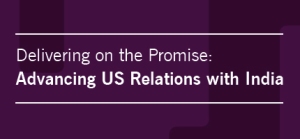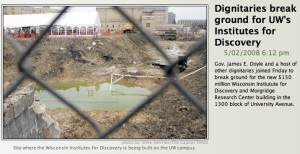The globalization of higher education and research is associated with a wide variety of shifts and changes, many of which (e.g., branch campuses) are debated about in relatively intense fashion. Other aspects of this transition, though, receive little attention, including the temporal rhythm of academic life; a rhythm being simultaneously maintained, extended, reduced, and bracketed.
In many ways not much has changed for we continue to follow a seasonal rhythm: the build up to term, the fall and spring cycles (punctuated by brief breaks of variable lengths), and then a longer summer ‘break’. When I was an undergraduate my summers were associated with work at fish canneries, mineral prospecting, and drill camps (throughout British Columbia and the Yukon) – the legacy of living amidst a resource-based staples economy.
 Summers during graduate student life in Canada and the UK were focused on research, with some holiday time. And summers now, at the University of Wisconsin-Madison in the US (pictured to the right, at dusk), are associated with a mix of research and writing time, university service, and holiday time with my family. But the real temporal anchor is the twin semester (or quarters for some) cycle split by a summer break.
Summers during graduate student life in Canada and the UK were focused on research, with some holiday time. And summers now, at the University of Wisconsin-Madison in the US (pictured to the right, at dusk), are associated with a mix of research and writing time, university service, and holiday time with my family. But the real temporal anchor is the twin semester (or quarters for some) cycle split by a summer break.
Scaling up, the rhythm of institutional life follows aspects of this seasonal cycle, albeit with noteworthy national and institutional variations. For example, research administrators kick into higher gear in the US and UK (where I am a visiting professor) during the summer and winter breaks before important national funding council deadlines, yet even research active university libraries shut down for much of the summer in France for the annual holiday cycle. Human resources managers everywhere get busy when new faculty and staff arrive in the July/August and December/January windows of time. We all welcome and say goodbye to many of our students at key windows of time throughout the year, whilst the term/semester/quarter cycle shapes, in bracing ways, the rhythms of contract (sessional) lecturers.
In an overall sense, then, it is this year-to-year seasonal rhythm, with fuzzy edges, that continues to propel most of us forward.
The globalization of higher education and research, though, is also extending, reducing, and bracketing our senses of time, as well as the structural rhythmic context in which we (as faculty members, students, and staff) are embedded.
For example, research on key ‘global challenges’ – something a variety of contributors to GlobalHigherEd have been reflecting about, and something international consortia (e.g., the Worldwide Universities Network) are seeking to facilitate – is inevitably long-term in nature. This is in part because of the nature of the issues being addressed, but also because of the practicalities and complications associated with developing international collaborative research teams. This said, government funding councils are resolutely national in orientation — they have a very hard time matching up budgetary and review cycles across borders and tying them up to the agendas of large international collaborative teams (CERN and a few other exemplars aside). So while research agendas and relationships need to be long-term in nature, we have really yet to develop the infrastructure to support a longer-term temporal rhythm when it comes to international collaborative research on ‘global challenges’.
Long-term thinking is also evident in the strategic thinking being undertaken by the European Commission regarding the role of universities in the European Higher Education Area (EHEA), as well as the European Research Area (ERA), in the context of the Lisbon agenda. Related forms of long-term thinking are evident in a whole host of agencies in the US regarding ‘non-traditional’ security matters regarding issues like dependency upon foreign graduates (e.g., ‘the coming storm’), comparative ‘research footprints’, and the like.
Moving the other way, the reduction and/or bracketing of temporal rhythms is most obvious in the higher education media, as well as the for-profit world of higher education, or in the non-profit world once endowments are created, and bonds are sold.
On the media front, for example, higher education outlets like US-based Inside Higher Ed and the Chronicle of Higher Education, and the UK-based Times Higher Education, are all active on a daily basis now with website updates, Twitter feeds, and once- to twice-daily email updates. The unhurried rhythms of our pre-digital era are long gone, and the pick-up in pace might even intensify.
On the for-profit and ratings front, stock value and revenue is tracked with increased precision, quarterly and annual reports are issued, and university data from networks of acquired universities are bundled together, while fund managers track every move of for-profit education firms. Interesting side effects can emerge, including replicant or Agent Smith-like dynamics where multiple offerings of honorary degrees to Nelson Mandela emerge within one network of universities controlled by the for-profit Laureate International Universities.
Ratings agencies such as Moody’s are also developing increased capacity to assess the financial health of higher education institutions, with a recent drive, for example, to “acquire liquidity data to provide a more direct and accurate gauge of the near-term liquidity standing” of each rated institution (on this issue see ‘Moody’s Probes Colleges on Cash’, Inside Higher Ed, 16 June 2010).
 Or take the case of national governments, which are beginning to develop the capacity to track, analyse and communicate about international student flow vis a vis export earnings (see recent data below from Australian Education International’s Research Snapshot, May 2010).
Or take the case of national governments, which are beginning to develop the capacity to track, analyse and communicate about international student flow vis a vis export earnings (see recent data below from Australian Education International’s Research Snapshot, May 2010).
This bracketing of time, which takes place in the Australian case on a combined monthly/annual cycle so as to enhance strategic planning and risk assessment at institutional, state, national, and international scales, has become both more thorough and more regular.
These are but a few examples of the new rhythms of our globalizing era. Assuming you agree with me that the temporal rhythm of academic life is being simultaneously maintained, extended, reduced, and bracketed, who has the capability to adjust rhythms, for what purposes, and with what effects?
I’ll explore aspects of this reworking of temporal rhythms in a subsequent entry on the global rankings of universities; a benchmarking ‘technology’ (broadly defined) that bundles together universities around the globe into annual cycles of data requests, data provision, and highly mediatized launches.
Kris Olds

 Editor’s Note: This entry has been kindly prepared by
Editor’s Note: This entry has been kindly prepared by 

 ISB is an exceptional institution, undoubtedly in the top tier of such institutions globally, in terms of how hard they work their students if nothing else!
ISB is an exceptional institution, undoubtedly in the top tier of such institutions globally, in terms of how hard they work their students if nothing else!
















